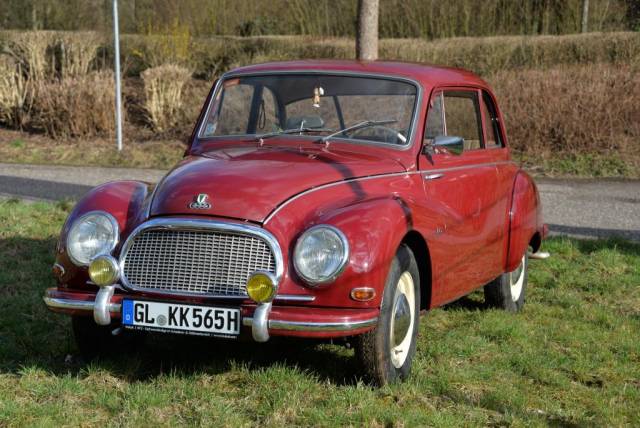DKW 3=6 classic cars for sale
The DKW 3=6 is a front-wheel drive saloon from the 1950s, known for its distinctive three-cylinder two-stroke engine, striking chrome details and remarkable body craftsmanship. Models like the F93 and its coupé and cabriolet variants embody technical distinctiveness and 1950s German design, making the DKW 3=6 a compelling choice for committed classic car enthusiasts.
Search results
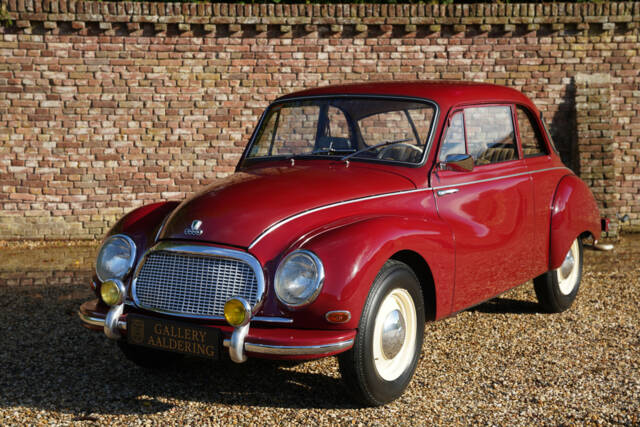
1956 | DKW 3=6
Auto Union DKW F93 Superb and original (driving) condition, First paint - original 34000 kms, Accompanied with the original board booklets, History file with purchase invoice (1956-1957) available, A true time capsule, From the private-collection of a renowned classic car expert from Germany,
DKW 3=6 listing references from Classic Trader
Below you will find listings related to your search that are no longer available on Classic Trader. Use this information to gain insight into availability, value trends, and current pricing for a "DKW 3=6" to make a more informed purchasing decision.
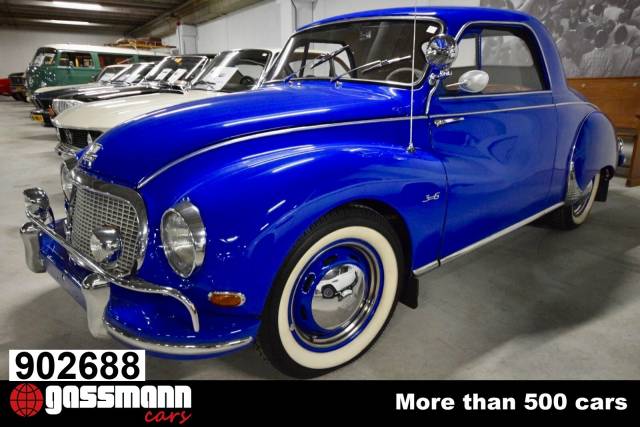
1954 | DKW 3=6
3 = 6 F93/ Coupe
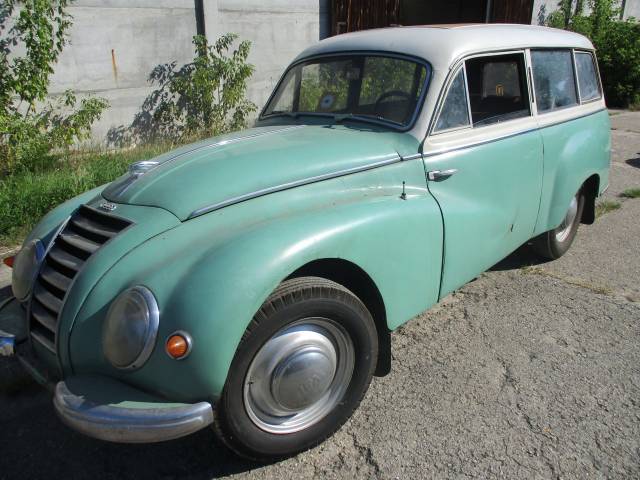
1955 | DKW 3=6 Universal
Oldtimer DKW CA 700
1956 | DKW 3=6
DKW 3=6 Sonderklasse
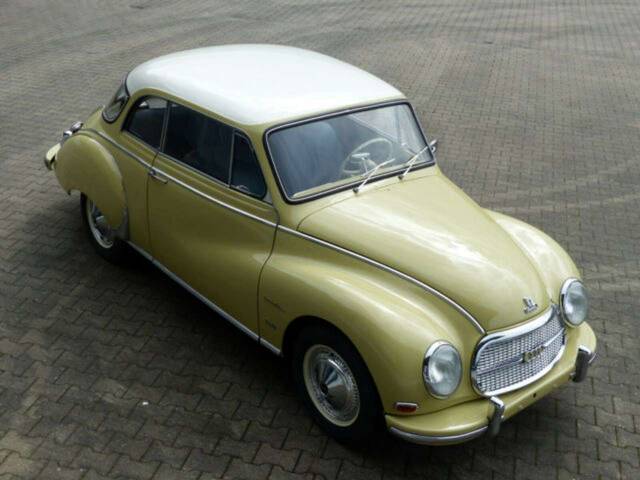
1957 | DKW 3=6
Sonstige Marken DKW 3=6 Sonderklasse
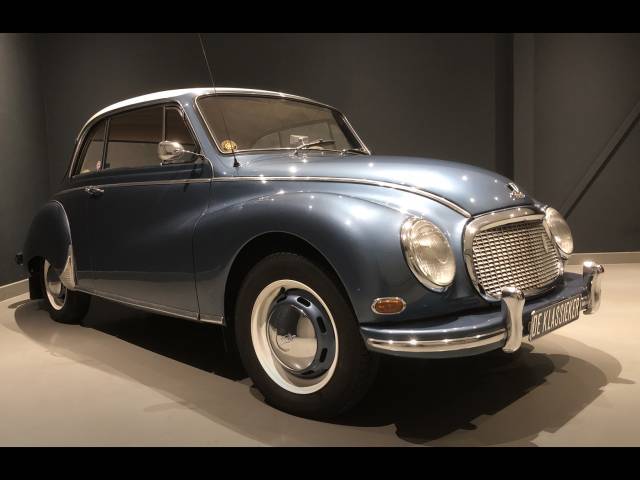
1959 | DKW 3=6
Auto-Union DKW F93 Coupe - Beautiful peace of German car history
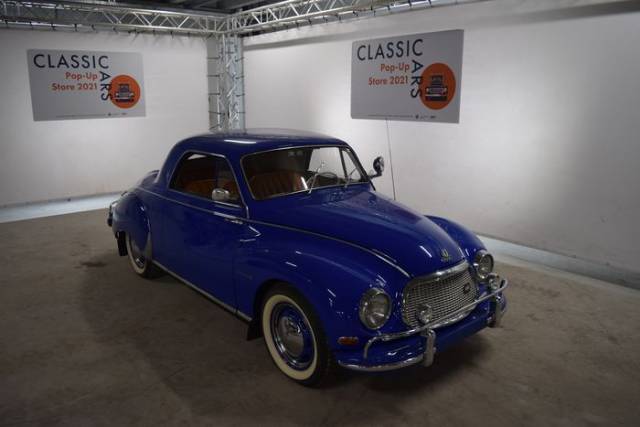
1957 | DKW 3=6
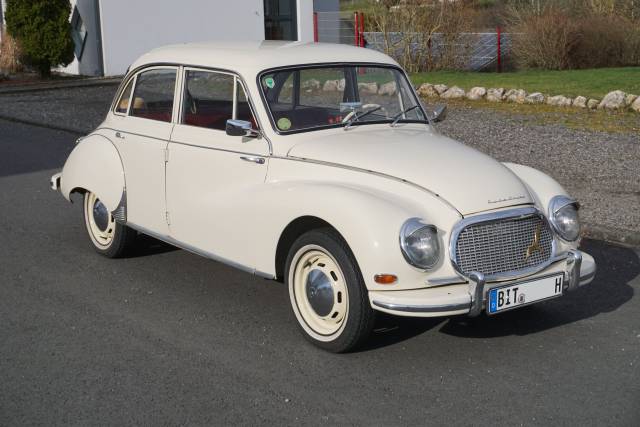
1957 | DKW 3=6
Tadellos restaurierter Zustand, H-Kennzeichen

1959 | DKW 3=6
1959 DKW F93 Coupé '59
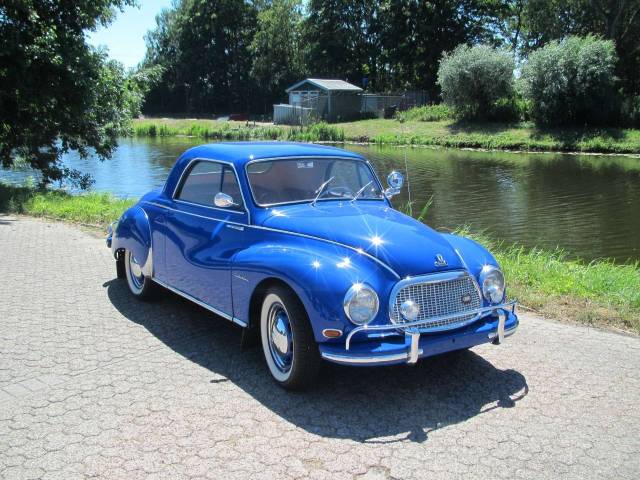
1957 | DKW 3=6
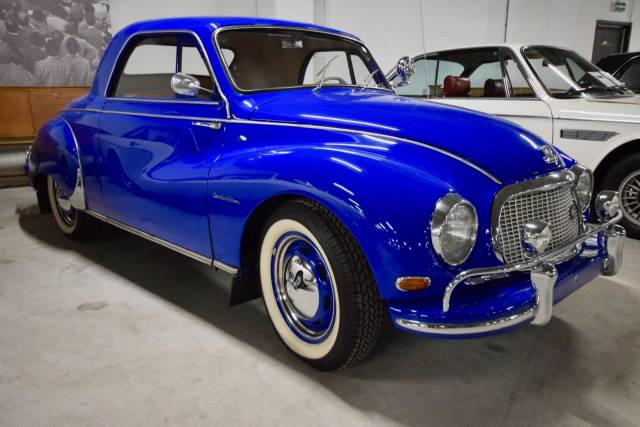
1957 | DKW 3=6
Online Auction "Classics, Sports Cars & Specials". From 9th to 22nd of May
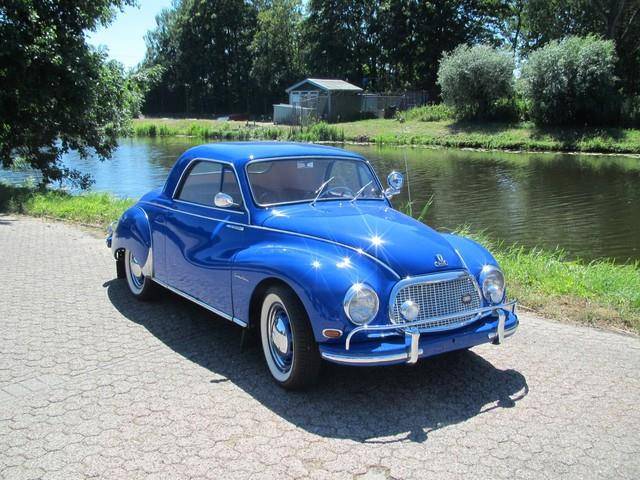
1957 | DKW 3=6
Oldtimer DKW 613 Coupé

1957 | DKW 3=6
Oldtimer DKW 3=6 Coupe F93 third owner car, fully restored cond
History of the DKW 3=6
The DKW 3=6 emerged in a period of postwar regeneration for Auto Union GmbH in Ingolstadt, with support from the Marshall Plan and Bavarian government loans. After World War II split the original Auto Union operations, DKW resumed car production in West Germany. The 3=6 traces much of its lineage to prewar development, especially the F9 model, whose influences were obvious in the F91 and F93. The F91, released in 1953, marked a technical and stylistic step forward, while the F93 (1955–1958) brought a 10 cm wider body, improved structural rigidity, and a higher comfort level. The '3=6' designation referred to its innovative three-cylinder two-stroke engine, capable of producing as many power strokes per revolution as a six-cylinder four-stroke motor, emphasizing mechanical efficiency and performance. From 1953 to 1959, the 3=6 series became a hallmark of mid-century German motoring.
Model history of the DKW 3=6 series
The 3=6 range began with the F91 (factory project number), later succeeded by the F93 and F94 models. The F93 is also known as the 'Big DKW 3=6' due to its broader body. Available in saloon, coupé, and cabriolet forms—always as two-doors initially—the model diversified with an estate variant (F94U) and four-door saloons with the F94 after 1957. The series concluded with the DKW 900, essentially a run-out model, as the Auto Union 1000 succeeded it by 1958. In total, 137,800 F93 and F94 vehicles were produced, including rare cabriolets by coachbuilder Karmann. The F93 coupe was notable for its pillarless design, and the series was also the last to carry the DKW badge before subsequent models used only the Auto Union emblem.
Highlights and distinguishing features of the DKW 3=6
The 3=6 models stand out for their use of a longitudinally mounted, three-cylinder, two-stroke engine with 38 hp from 906 cc. The Frischölschmierung (fresh-oil lubrication) system, four-speed column shift and absence of a transmission tunnel gave the cabin an uncluttered feel. Rich chrome trims, especially on the coupé, and the elegant, pillarless roofline are distinguishing features. Excellently preserved or unrestored examples, often with documentation, are highly prized among connoisseurs. The F93's reinforced and widened structure uniquely improved torsional rigidity and road comfort for its time.
Technical data of the DKW 3=6
Special Editions and Collectible Models
Karmann-bodied cabriolets (667 units) are the rarest, while coupés with the pillarless design are especially valued. Dannenhauer & Stauss built the DKW Monza sports car based on the F93 chassis—these limited numbers and unique body styles are sought after by collectors and enthusiasts.
Weak Spots and Common Issues
No specific weaknesses are currently documented in the provided data. However, as with all vehicles of this period, attention to rust in the steel body, integrity of the unique two-stroke engine, and the complexity of the chrome and trim restoration are known considerations when inspecting these models. Restoration quality varies, so thorough inspection and documentation review are recommended.
Engine, Transmission, and Driving Experience
The DKW 3=6, especially as the F93, delivers a distinctive driving experience. The lively two-stroke three-cylinder engine provides characteristic sound and torque response, while front-wheel drive ensures good traction and handling on varied road surfaces. The widened body of the F93 improved high-speed comfort and reduced flex. The column shifter is both classic and ergonomic. The absence of a transmission tunnel gives an airy cabin feel, unique among its contemporaries. Among the various 3=6 models, the F93 dominates market presence and search interest, largely due to its technical advances and expanded body. Early saloons are favoured for original condition, while Karmann cabriolets and pillarless coupés attract enthusiasts seeking rarity and design distinction.
Interior, Comfort, Exterior, and Design Features
The DKW 3=6 impresses with its harmonious lines, generous chrome highlights, and thoughtful cabin design. Special colours, high-polish trim, and stylish materials were standard—particularly on the coupé, where the pillarless roofline ensures a visually flowing silhouette. Early versions are notable for factory-precision panel fit and period-correct paint schemes. Optional accessories included elaborate radio sets and decorative trims. Restoration documentation often highlights complete body-off work, testifying to the value placed on authenticity among the collector community.
Other relevant features
DKW 3=6 vehicles are often found both in well-preserved original state and as expert restorations. Provenance, restoration photo documentation, and technical overhaul records can substantially enhance a car's desirability and verifiable condition. Viewing appointments, including digital live inspections, are now common and recommended before purchase decisions. These vehicles sometimes feature in temporary displays at classic car pop-up venues.
Summary of the DKW 3=6 classic cars
The DKW 3=6 series represents a significant phase of technical and design progress from postwar West Germany. Its striking engineering, especially the innovative two-stroke three-cylinder engine, and elegant bodywork have made models like the F93 especially prominent among enthusiasts and collectors. Pillarless coupés and Karmann cabriolets underline the diversity and craftsmanship within the series. With strong market supply and demand, particularly for the F93, and care towards restoration and originality, the DKW 3=6 continues to be a notable and respected presence in classic car circles.

